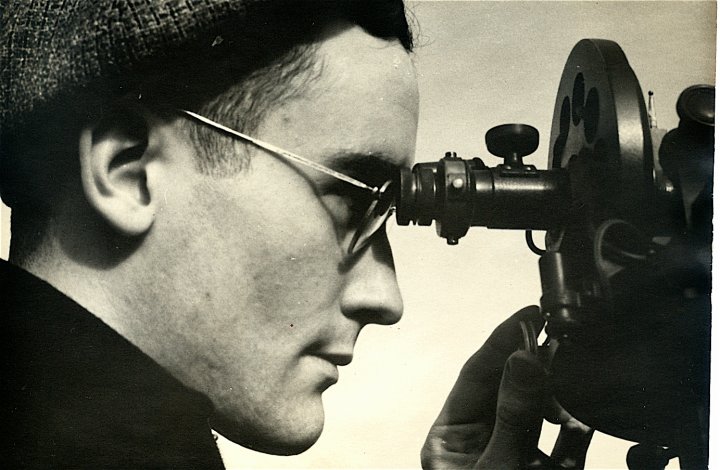
Depending on how you define the term meteorologist, the first weatherman killed in the line of duty was quite possibly Pliny the Elder.
The 1st century Roman scholar was a persistent observer of natural phenomenon and creator of earth’s oldest surviving encyclopedia. When Mount Vesuvius erupted in 79 AD, firing a 20-mile high spout of ash and stone into the air, Pliny set out by ship to rescue a friend named Rectina from the volcano. Presumably, he was also interested in gathering scientific information on the eruption. Approaching the shore near Herculaneum, cinders and pumice began raining down. Pliny was unable to find Rectina, and with the city’s buildings collapsing under the bombardment, he sat down on the beach and for reasons that are still unknown today, lost consciousness and died.
Despite his early sacrifice to the noble cause of understanding Mother Nature’s meteorological machinations, Pliny’s name was not invoked at a ceremony held in Washington D.C. this past Thursday honoring four civilian weathermen killed more than 70 years ago. On September 9, 1942, the U.S. Coast Guard Cutter Muskeget was torpedoed in the North Atlantic by a German U-Boat. The Muskeget was a weather ship, charged with providing up-to-date meteorological conditions over strategic stretches of remote oceans so convoys containing fuel, munitions, soldiers and supplies could make it across the Atlantic from the United States to Britain. The German sub—U 755—sank the Muskeget, and all 121 people aboard died, including nine officers, 107 enlisted men, a Public Health Service doctor, and the four weathermen.
USS Muskeget (AG-48) – originally USS YAG-9 – was acquired by the US Navy in 1941 for use during World War II. She was originally placed in service as a patrol vessel but transferred to the US Coast Guard for use as a weather ship in the North Atlantic Ocean and renamed USCGC Muskeget (WAG-48). (Source: Wikipedia)“Britain would have fallen if the convoys had not made it across the Atlantic,” Dr. James Delgado, Director of Maritime Heritage at the National Oceanic and Atmospheric Administration (NOAA) told those gathered at the ceremony, held at the Naval Heritage Center.
While the rest of the crew of the Muskeget were posthumously awarded Purple Hearts, the weathermen did not receive the honor because civilians were not approved to get it without confirmation that the person in question was killed or wounded in action—servicemen and women were able to receive the award under the presumption of enemy attack. But a few years ago logs from the German U-boat that sank the Muskeget were made public. They indeed noted that “a weather ship on position” had been fired upon on September 9, 1942. This was the confirmation needed, and thus the delayed Purple Heart for the four weathermen.
“Weather patterns in the region were not well known or studied,” Delgado continued, in his remarks at the ceremony. “Both sides understood the need for accurate weather reports. Both sides expended considerable effort to establish weather stations and post weather ships in the North Atlantic. And, in consequence, weather ships and stations became strategic targets for both sides.”
NOAA issued a press release about the ceremony, which, among other things, provided an outdated but poetic list of instruments used by the weathermen on the Muskeget:
Barometer, recording barograph, wet bulb and dry bulb thermometers/sling psychrometer, anemometer, theolodite, sextant, cloud charts, sea state charts, bearing circle/alidade, radiosondes, weather balloons, vector calculator (aka “wind wheel”), and a bucket to take sea water temperature.
Also in the release are the names of the weathermen that were killed: Lester S. Fodor, of Cleveland, Ohio; George F. Kubach, of Sandusky, Ohio; Edward Weber, of New York, New York and Luther H. Brady, of Atlanta, Georgia.
Weather forecasting is a profession that focuses on dangers, but rarely do we consider the mortal dangers inherent in the profession itself. One imagines today’s weathermen and weatherwomen standing safely in front of blue screens, and yet it’s an inaccurate depiction, as it is often the unknowable and dangerous element of weather that drive people toward the profession in the first place. And in recent decades, the profession has changed. Satellites and weather buoys have made the weather ship obsolete, but there is still a need for human observations in remote yet geographically-critical regions. We call the people who fill this call, storm chasers, and their task is wrought with danger.

Veteran Storm Chasers Tim Samaras, Paul Samaras, and Carl Young were killed in June 2013 while chasing an EF3 tornado close to El Reno, Oklahoma.
A few years ago, an erratic and powerful June tornado killed three veteran chasers near El Reno, Oklahoma. The white truck the men were in was “crushed like a tin can,” according to CNN. “Storm chasers and meteorologists [are] part of the vital link in getting the word out to people so that they don’t become victims,” one local sheriff explained. “A lot of these individuals have dedicated many years of their lives to going out and assisting and tracking storms, and getting footage and putting themselves in harm’s way.”
These chasers may not receive a Purple Heart—after all, the fate of western civilization did not rest in their hands—but they are members of the long arc of people, from Pliny to the weathermen of the Muskeget, who have risked their lives to gather information about the weather and other storms of nature.
“As we remember the weathermen and their ship today,” said Delgado at the ceremony, “let us remember that they served a noble cause; they knew that they might not return, and in doing so they made a difference…they helped win the war.”
That particular war may be over, but now more than ever it’s apparent that weather and humanity are locked in a deadly struggle, each moving to wrangle the other to fit its form, and those on the frontline certainly deserve some recognition.
Lastly, I think it’s important to mention another outdated weather term: weatherman. As journalist Sam Anderson explained last summer in an article about Oklahoma storm chasers for the New York Times Magazine, “One of my favorite characters was Emily Sutton, a meteorologist and storm chaser at…Channel 4.”
Sutton, 28, is originally from suburban Chicago and has swiftly become a weather rock star on the competitive Oklahoma City chaser scene. She has performed the national anthem twice at Oklahoma City Thunder games, gets stopped regularly at restaurants, and recently survived the experience of being caught in the peripheral winds of the widest tornado in recorded history.
Follow Funeralwise on Facebook, and author Justin Nobel on Twitter.









